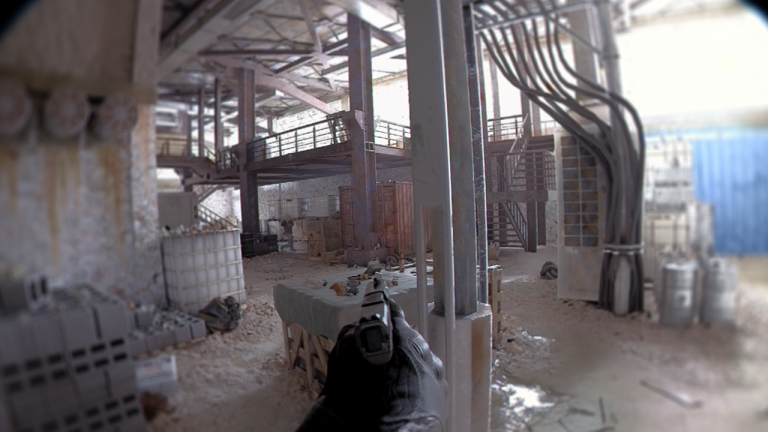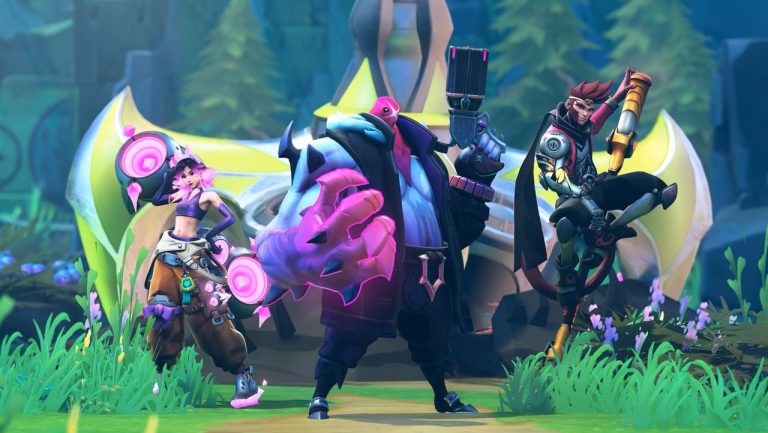(Image credit: Future)
This month I’ve been testing: More keyboards, gaming mice, and headsets. Oh, and a spot of FSR 3.1 testing, to see if AMD’s latest upscaler release cuts the mustard compared to DLSS. I hate to spoil an upcoming article for you, but, err, don’t hold your breath.
A recent Microsoft ad claims that thanks to Copilot, you, I, and indeed all of us can attend multiple meetings at once. This caused some degree of online confusion, but swiping through the ad reveals that the feature Microsoft is touting is Copilot’s ability to summarise meetings on your behalf.
As the feature currently stands, if you join a Microsoft Teams meeting that’s being recorded and transcribed five minutes or more after it’s started, selecting Copilot will allow you to read back a summary of the conversations you’ve missed. More than that, Copilot is also able to answer queries from a meeting transcription, such as “Where do we disagree on this topic?” or even create a table with respective pros and cons.
Seems reasonably useful, that. It’s not quite attending “three meetings at once”, however, as the ad claims, unless it means that reading a Copilot-based summary after the fact is the same as attending.
As to where this sort of feature might be going, however, Zoom CEO Eric Yuan has some bigger ideas. In an interview with The Verge, Yuan revealed that part of the elevator pitch for Zoom Workplace—a new collaboration platform from the video conferencing giant—involves deploying an AI assistant to go to meetings for you. And more than that, in the near future, we could all send our AI digital assistants to have meetings with each other:
“Today for this session, ideally, I do not need to join. I can send a digital version of myself to join so I can go to the beach. Or I do not need to check my emails; the digital version of myself can read most of the emails.
“I think for now, the number one thing is AI is not there yet, and that still will take some time. Let’s assume, fast-forward five or six years, that AI is ready. AI probably can help for maybe 90 per cent of the work, but in terms of real-time interaction, today, you and I are talking online. So, I can send my digital version—you can send your digital version.”
Stay connected with recaps and action items from Copilot for Microsoft 365 and Teams.May 17, 2024
As Yuan points out, certain things can’t reasonably be reproduced by a digital version of ourselves, like shaking hands, hugging, or grabbing a coffee together. But for all the boring, day-to-day drudgery stuff, why not hand the supposedly menial parts of our jobs over to our AI avatars, so we can all spend more time on the beach?
Well, it’s not difficult to see where problems may arise here, but let’s give it a crack for good measure. For a start, while the tech industry ties itself in knots about AI ethics, regulation, and a lot of other after-the-fact hand-wringing about a technology we still struggle to define, let alone control, there remains a simple problem: AI gets things wrong. All the time.
Intel’s Pat Gelsinger provides some interesting insights here. Speaking at the World Economic Forum earlier this year, Gelsinger revealed that, to his mind, the problem with AI currently is that it’s very proficient at “thinking fast”, i.e. intuitively, but doesn’t yet have the ability to “think slow”—by which he means, think rationally and reasonably about a problem, and this is currently a huge area of research.
“Today our systems hallucinate, tomorrow if we’re going to use them broadly, they have to be right.”
“Today our systems hallucinate, tomorrow if we’re going to use them broadly, they have to be right.”
Nail on the head, that one. If my AI avatar has a meeting with your AI avatar as things currently stand, and one of them misinterprets a question or a response, we’re both going to be sitting on the beach drinking our respective pina coladas with potentially useless information.
Perhaps that’s an overly cynical view, however. Perhaps, as Eric Yuan predicts, in five or six years’ time, AI has been massively improved. Our AI avatars are as good (or perhaps, even better) than we are at discourse, debate, rational thought, and coming to meaningful conclusions.
In which case, my friends, we won’t be sitting on the beach enjoying the sun, but walking up and down it with a sign saying “Insert your profession here for hire”. Because if there’s one thing that’s certain, it’s that no major company is going to bother employing difficult, unpredictable, perhaps even creative human beings to do the jobs they do now if AI is sufficiently good enough to replace many of the fundamental parts of it. At the very least, not to the same extent.
Me, on the beach, realising my jobs been stolen. Or alternatively, Ichiban from Like A Dragon: Infinite Wealth. (Image credit: Ryu Ga Gotoku)
Put it this way: I’d love to live in a future where most of the menial aspects of my job were done for me by my chippy robot assistant, leaving me to get on with the task of doing nothing but writing for a living, or taking extended holidays. But this, to my mind at least, seems like entirely wishful thinking.
It’s the same argument used in starry-eyed TV spots from the 1950s about a utopian future where, thanks to technology and mass-automation, we’d soon be living in an era of extended leisure. Soon, the robots will be here, doing all the jobs we don’t want to do for us, and as a result, we’ll simply fart around the house wondering whether we should take up painting or tennis.
Look what happened to that. Mass-automation arrived, technology developed the ability to simplify many menial tasks, and yet today we still work just as hard as we ever did, arguably harder, just to earn a crust. The jobs that it was able to automate became unviable for humans to compete in, companies preferred to save money, time, and hassle with the machines, and those previously filling those positions simply had to move on and find different work elsewhere.
If a machine can do a job just as well as a human, then at scale, the machine will almost certainly be cheaper and more efficient to employ. Tesla may already be showing us the future here—it’s recently shown off its Optimus bot that aims to be mass-produced, take on “unsafe, repetitive and boring tasks” and sell at $20,000 a pop.
(Image credit: Tesla)
That’s cheaper than a human’s yearly salary in a similar role, although, admittedly, it’s probably still a lot worse than a human at many tasks. However, given the rate of advancement in AI and robotics tech, how long will this remain the case?
And let’s face it: while we, as individuals, may prefer something handcrafted, artistically made and verified by another one of us, time has shown that companies will look to using whatever automation is necessary to remove human beings from their bottom lines. And we’ll accept it.
This “three meetings at once”, “digital twin”, and “live your life on the beach” rhetoric is nothing but fantasy. While AI might be a useful tool in certain scenarios as things currently stand, if we really are moving towards a future where it’s capable of attending meetings, sorting through our emails, coming up with action plans and essentially doing half our jobs, then it only follows that half a job, and potentially half a paycheck, will be left for the human behind it.
And I just made myself sad. I don’t want to come off as fear-mongering (although I probably have), nor overly cynical. But when I see industry leaders talk with enthusiasm for AI’s uses in the workplace, and its upcoming integration, I don’t see a bright future of leisure in front of me. I see sharks with teeth.












